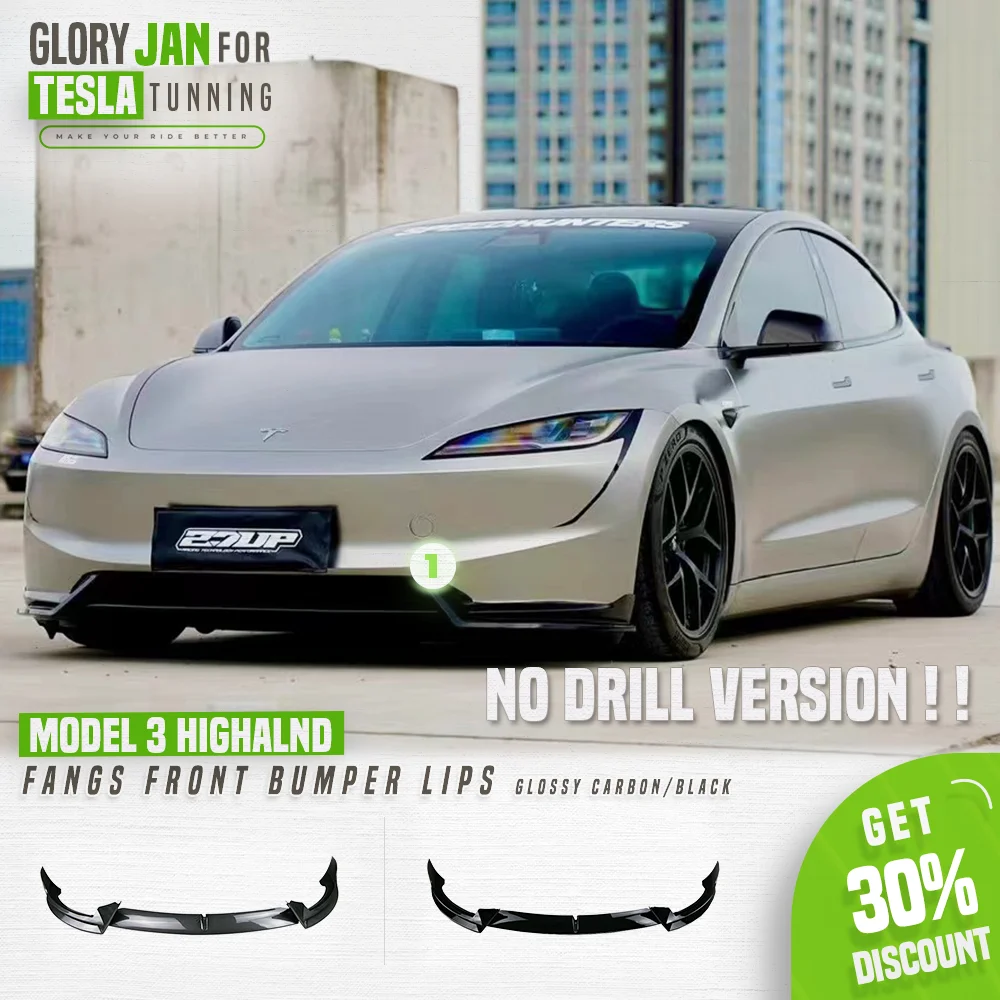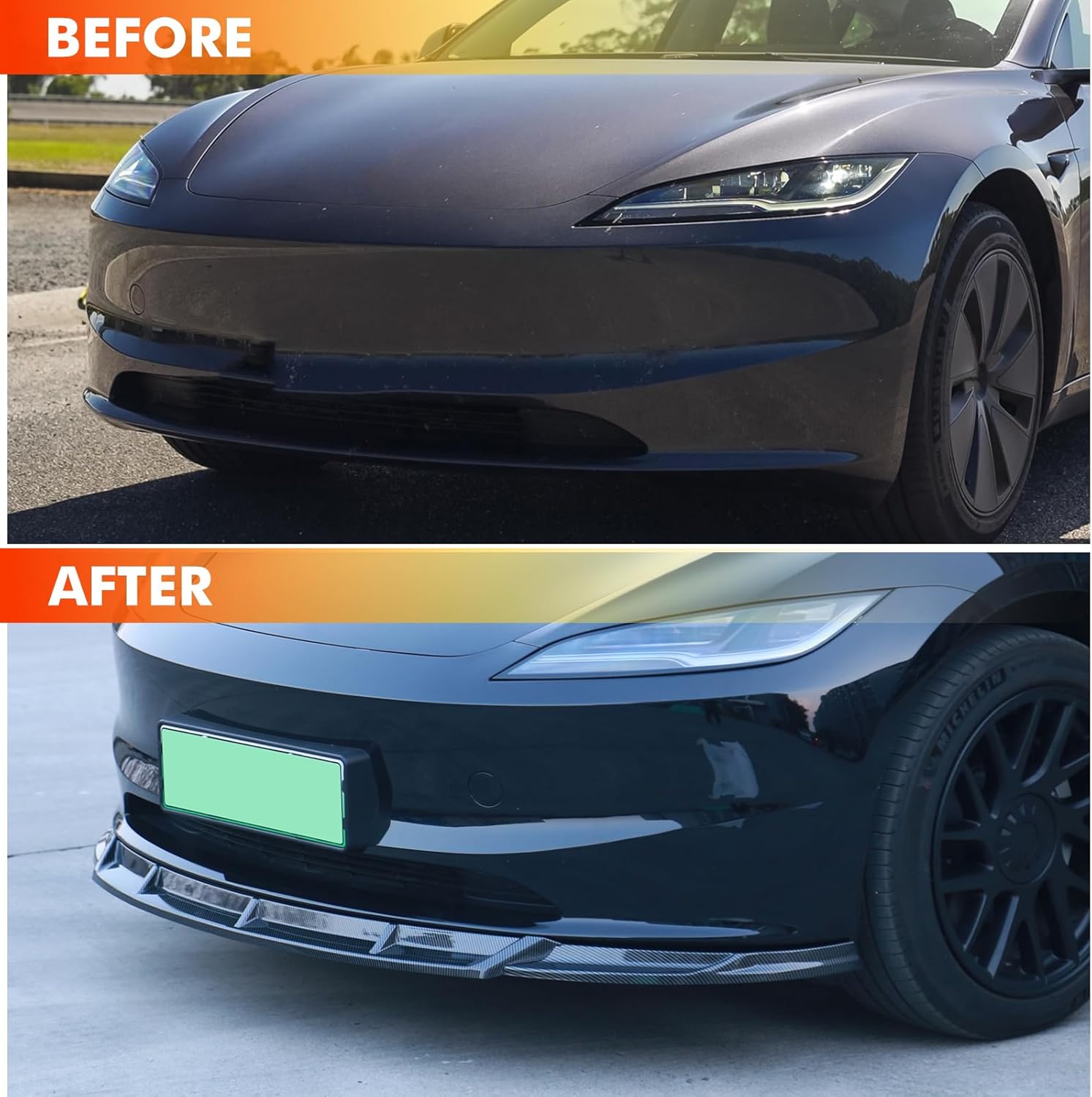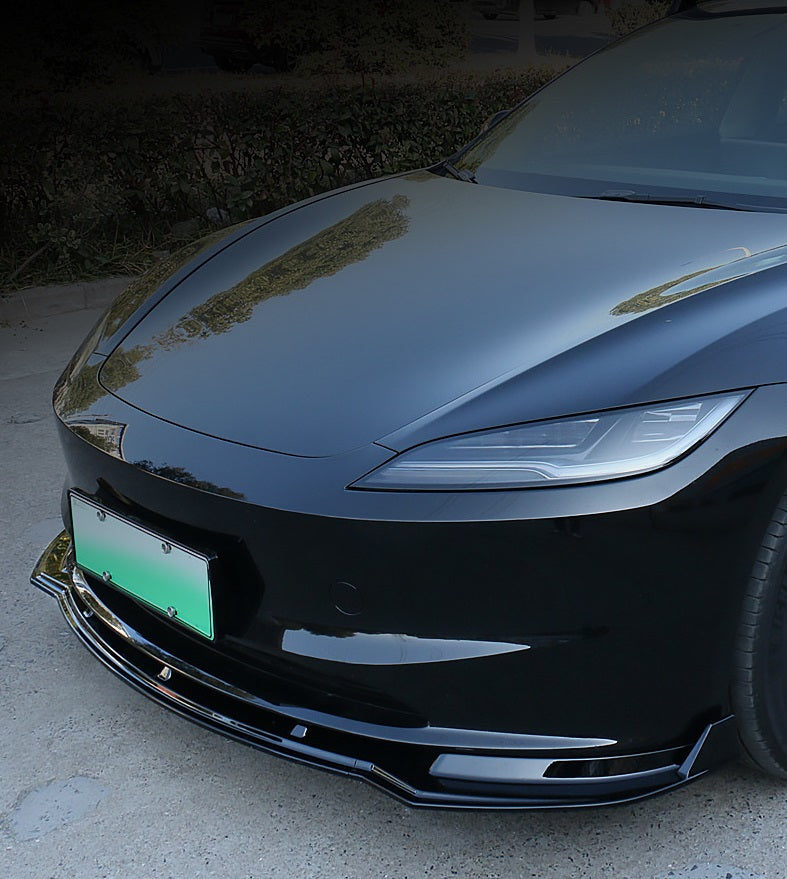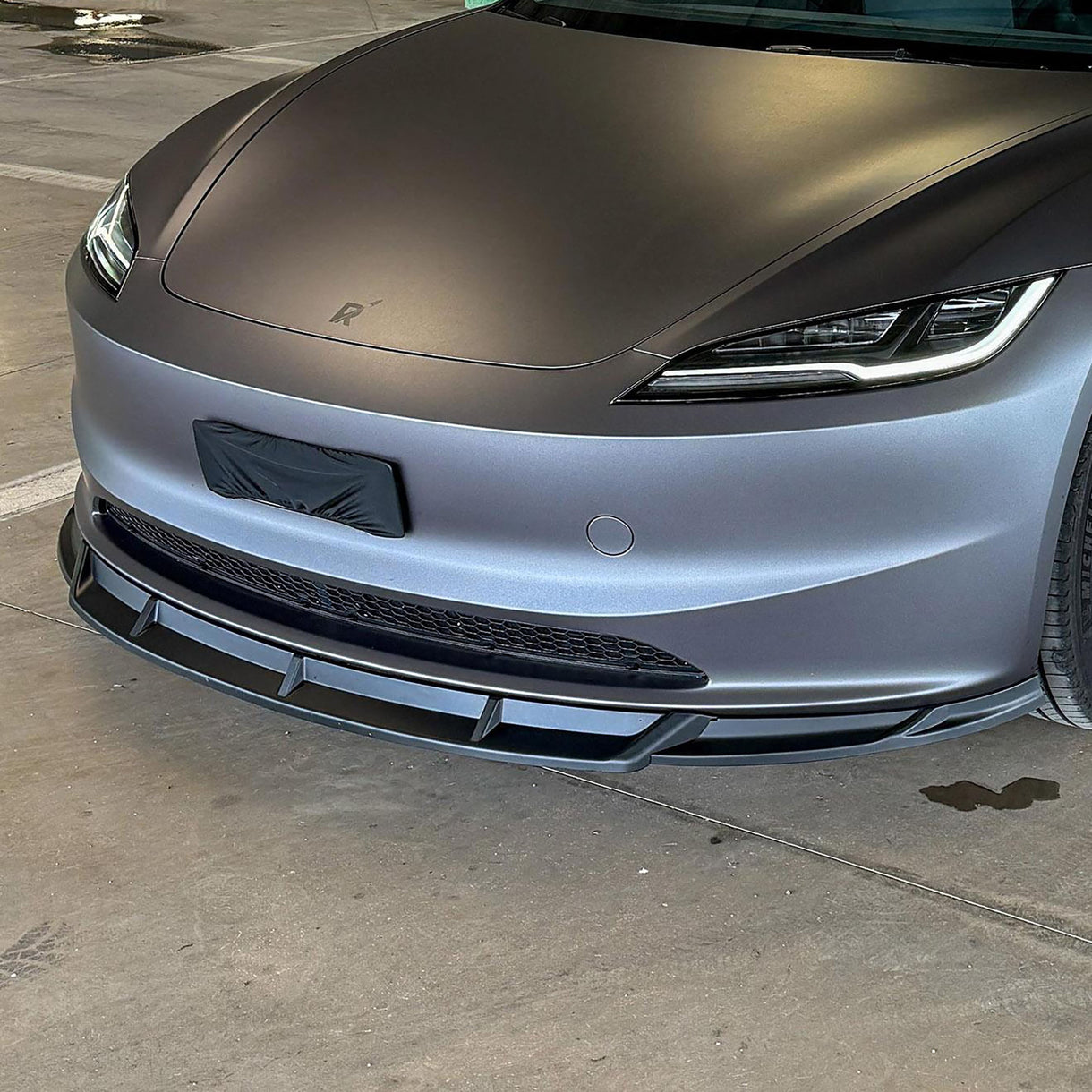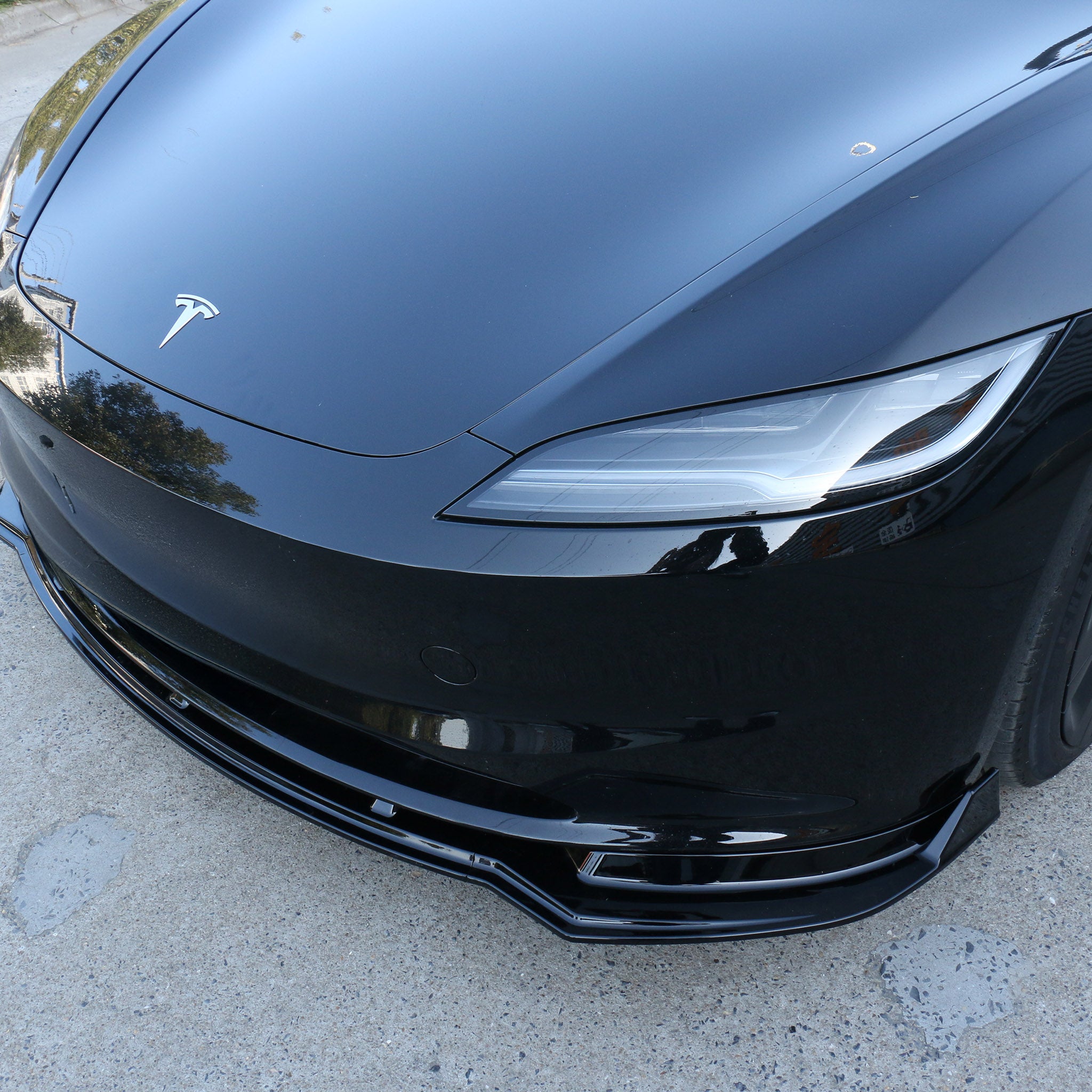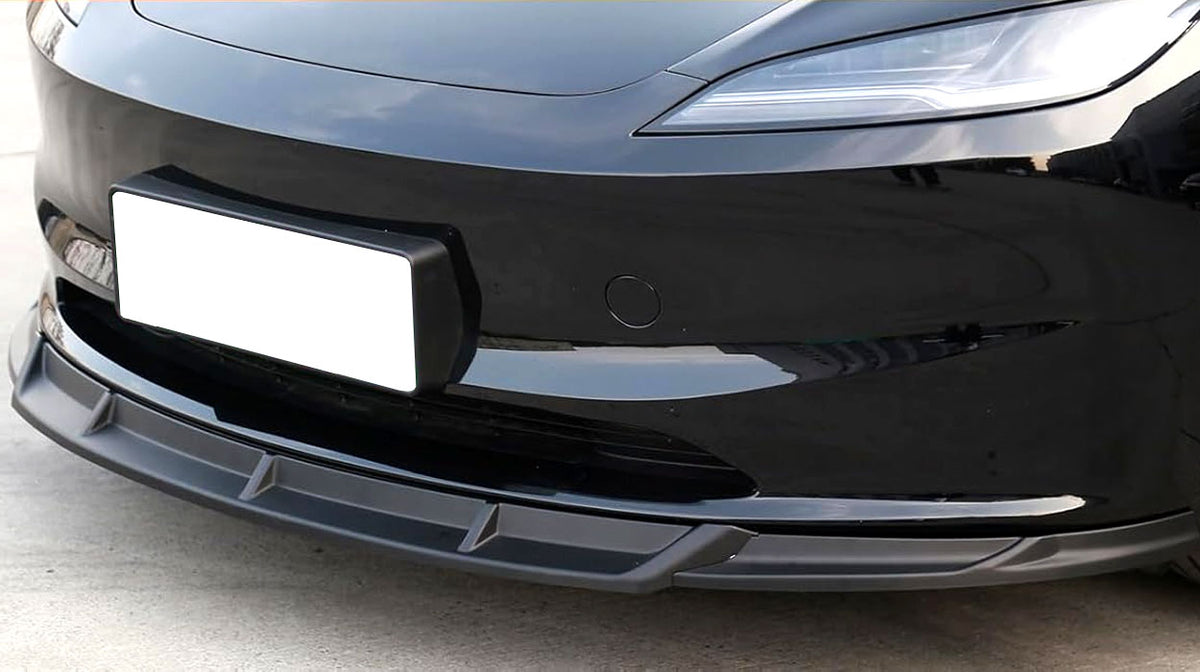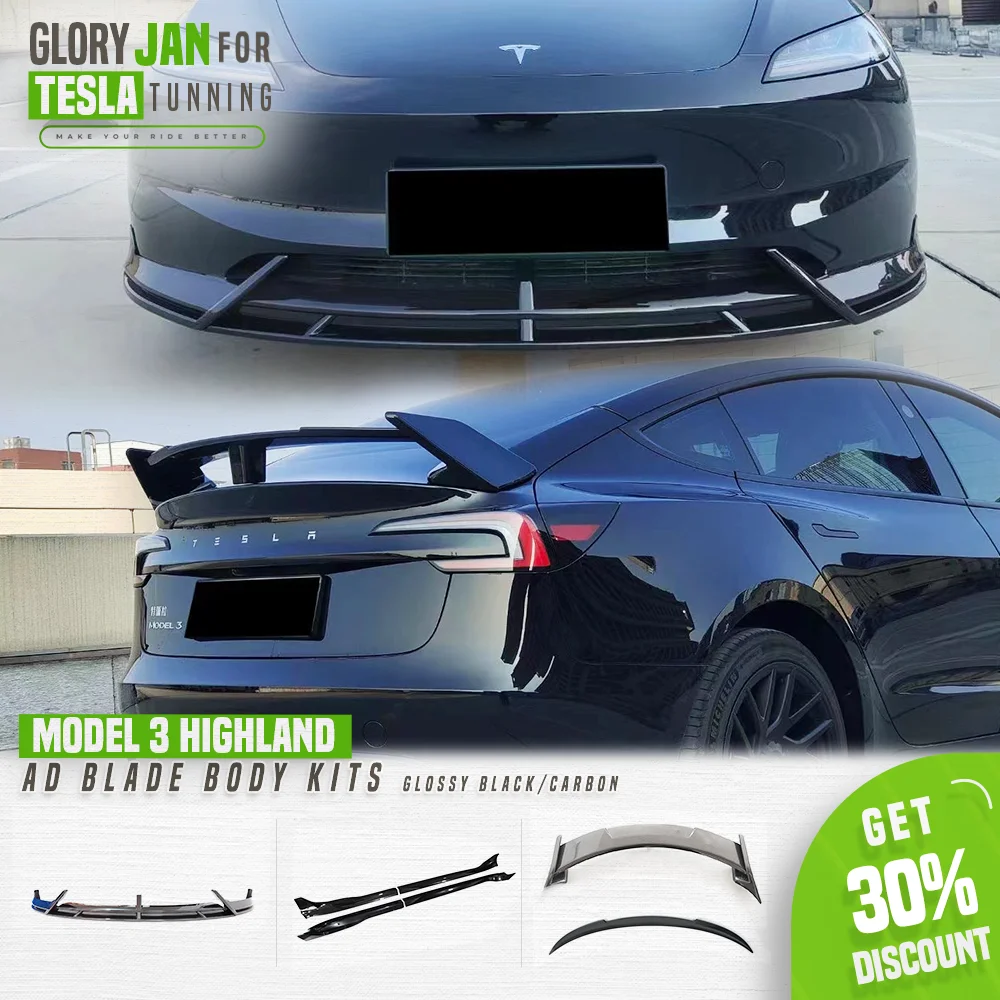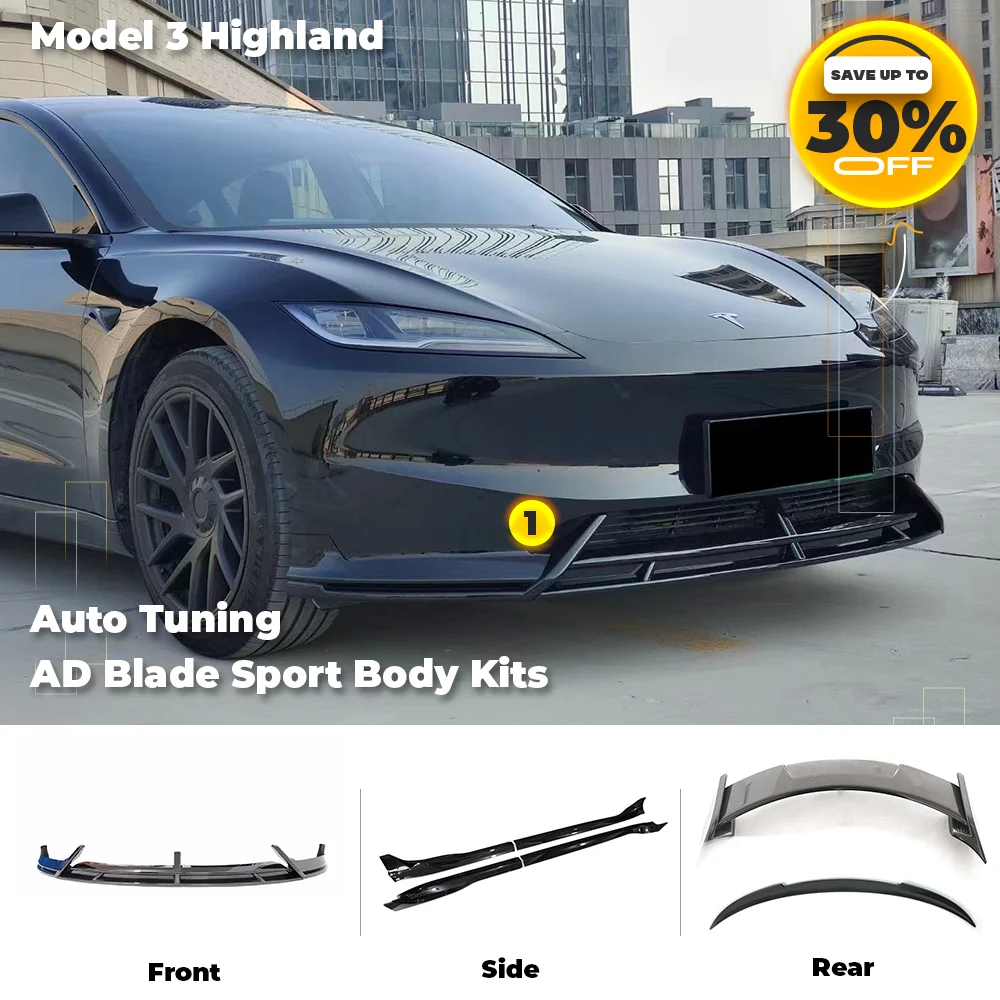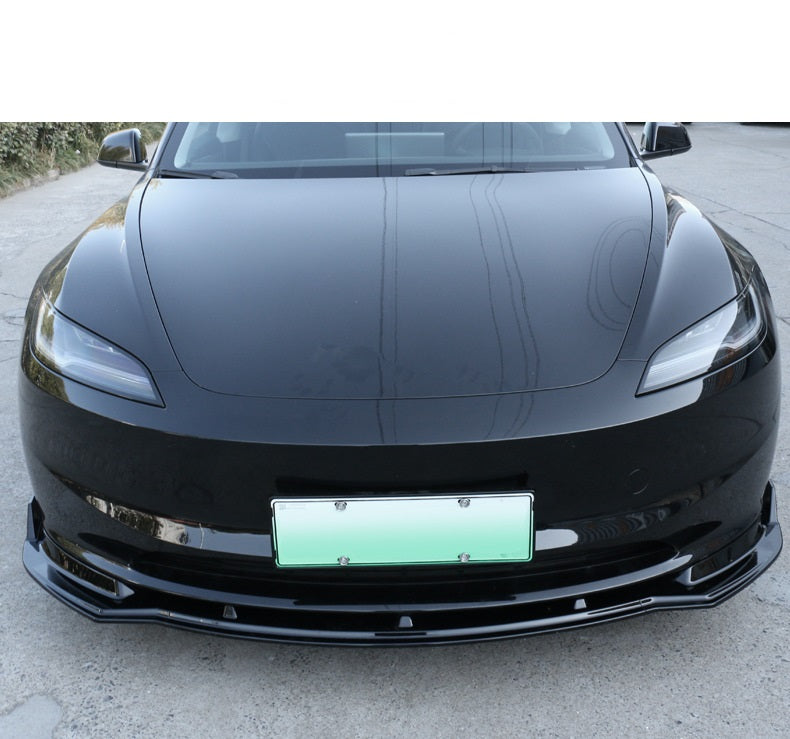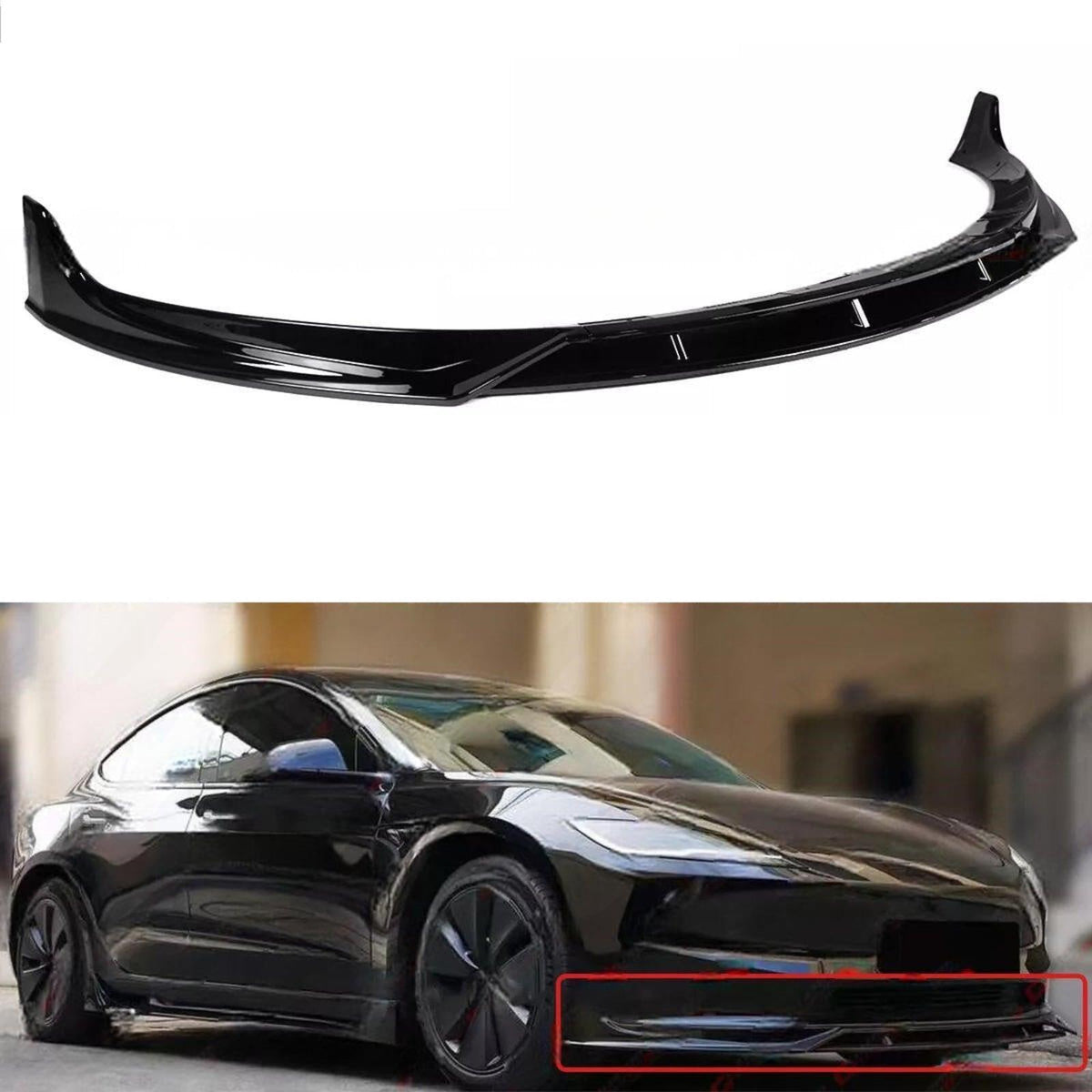Tesla Model 3 Highland Front Lip
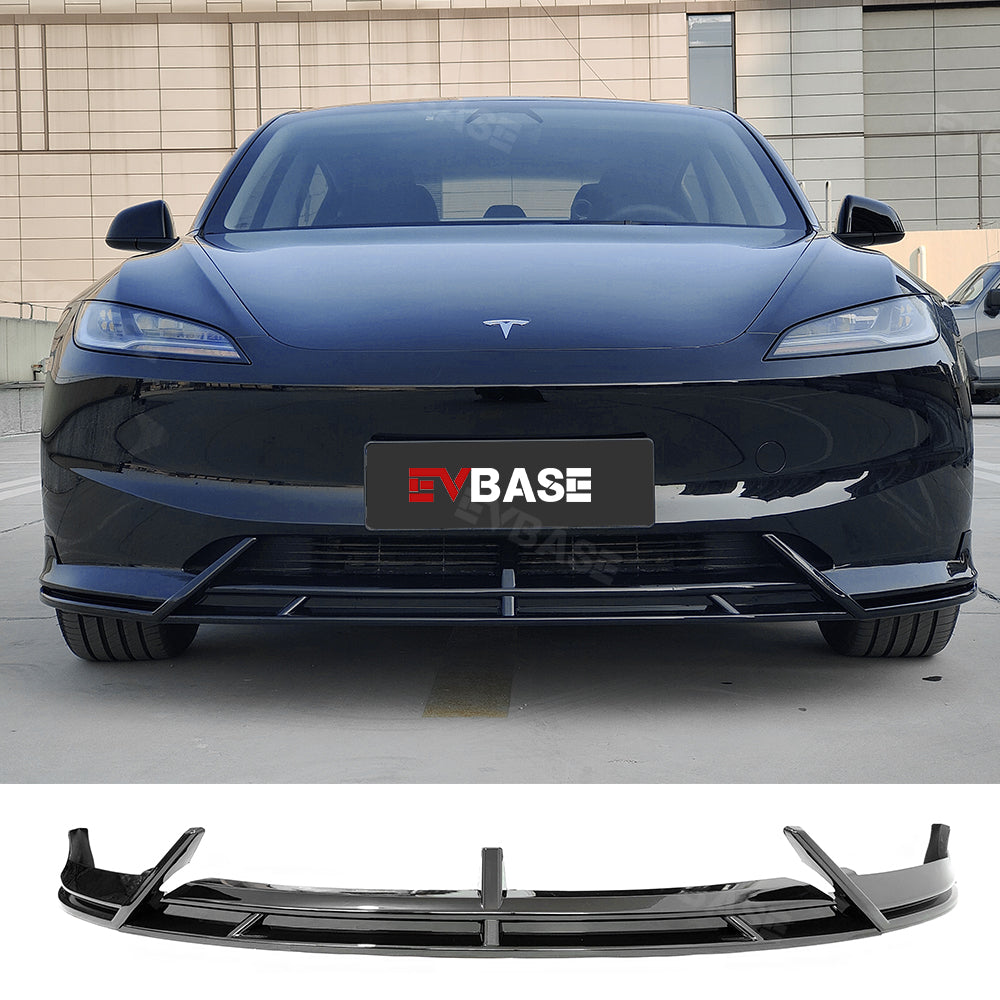
The redesigned front end of the Tesla Model 3 "Highland" has sparked considerable debate and aftermarket activity, particularly surrounding its front lip. This seemingly small component has become a focal point for owners seeking to personalize, protect, and even improve the aerodynamic performance of their vehicles.
The aftermarket rush to develop and offer front lip options highlights the significance of this design element. It also raises questions about the original design's functionality and aesthetic appeal.
The Highland's Redesign and Initial Reactions
The Model 3 "Highland," officially the refreshed Model 3, introduced a more streamlined and aggressive front fascia. Key changes included slimmer headlights, a revised bumper, and a more pronounced, though still relatively subtle, front lip spoiler. This design aimed for a sportier aesthetic, aligning the Model 3 more closely with Tesla's other models.
Initial reactions to the Highland's front end were mixed. While some praised the updated look as modern and sophisticated, others found it lacking in character or perceived it as too generic.
This difference in opinion has fueled a robust aftermarket response, with companies quickly producing a variety of front lip options catering to different tastes and performance goals.
Aftermarket Front Lip Options: A Flourishing Market
The aftermarket for Model 3 Highland front lips is already booming. A wide array of styles, materials, and price points are available, offering owners a diverse selection to choose from.
Carbon fiber lips are a popular choice, offering a lightweight and visually appealing upgrade. Other options include polyurethane (PU) and acrylonitrile butadiene styrene (ABS) plastic lips, which are typically more affordable and durable.
Beyond aesthetics, some aftermarket lips are designed to improve aerodynamic performance, potentially increasing downforce and reducing drag.
Types of Front Lips
Several distinct styles of front lips have emerged for the Highland.
"Blade" style lips are typically thin and extend horizontally across the front bumper, offering a subtle yet sporty enhancement.
Aggressive, multi-piece lips provide a more dramatic visual impact, often featuring complex curves and extended splitters. These are typically intended for aesthetics more than performance.
Some lips feature integrated splitters or canards, which are designed to channel airflow and generate downforce.
Materials and Construction
The choice of material greatly influences the price, durability, and appearance of the front lip. Carbon fiber offers the highest strength-to-weight ratio but is also the most expensive.
PU is more flexible and impact-resistant, making it a good choice for everyday driving.
ABS plastic is a cost-effective option that balances durability and affordability.
Potential Benefits and Drawbacks
Adding an aftermarket front lip can offer several potential benefits. These include enhancing the vehicle's appearance, protecting the front bumper from scrapes and damage, and potentially improving aerodynamic performance.
However, there are also potential drawbacks to consider. Poorly designed or installed lips can negatively impact aerodynamics, increasing drag and reducing fuel efficiency. Increased ground clearance risks contact with speed bumps and steep driveways.
Furthermore, the quality and fit of aftermarket lips can vary significantly. Selecting a reputable brand and ensuring proper installation are crucial to avoid issues.
Expert Opinions and Data
While Tesla has not officially commented on the aftermarket front lip modifications, several automotive experts have weighed in on the topic. Many agree that a properly designed front lip can improve the car's aesthetics and potentially enhance its aerodynamic performance.
However, caution is advised when selecting and installing aftermarket lips. Aerodynamic testing, such as wind tunnel simulations, is recommended to ensure that the lip actually improves performance rather than hindering it.
Data on the actual performance improvements offered by aftermarket front lips is limited. Independent testing is necessary to verify the claims made by manufacturers.
Installation and Maintenance
Installing a front lip can range from a simple DIY project to a more complex task requiring professional assistance. Many lips attach using double-sided tape and screws, while others may require drilling and more extensive modifications.
Proper preparation, including cleaning and priming the mounting surfaces, is essential for a secure and durable installation.
Regular maintenance, such as cleaning and inspecting the lip for damage, is also important to ensure its longevity and performance.
The Future of Highland Front Lip Customization
The aftermarket for Tesla Model 3 Highland front lips is likely to continue to grow. As more Highland models hit the roads, the demand for customization options will increase.
We can expect to see further innovation in front lip design, with manufacturers exploring new materials, shapes, and functionalities. Integration with other aftermarket components, such as side skirts and rear diffusers, is also a likely trend.
Ultimately, the choice of whether or not to add an aftermarket front lip to a Model 3 Highland comes down to individual preference. While some owners prioritize aesthetics, others seek to improve performance or protect their vehicle. The availability of a wide range of options ensures that there is a front lip to suit every taste and budget.
